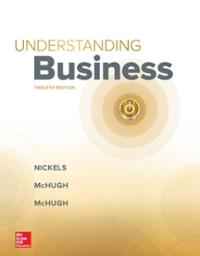Matching: Match the Key terms in Column "A" with the definitions in Column "B" by writing the block (upper) case letter of your choice undercolumn "A" and match the definitions in column "B" with the meanings or examples or real-world applications in column "C" bywriting the small(lower) case letter of your choice under column "B". I NEED ANSWERS FOR EVEN-NUMBERED QUESTIONS. Thank you.
Chapter 13 or 26. Factor Markets lllllth Emphasis on the Labor Market: Pre- Class & ln-Class Activities Packet Nameil.D. Number: Section: Date: Part 2. Matching: Match the Key terms In Column \"A\" with the denitions In Column "B\" by writing the block (upper) case letter of your choice under column \"A\" and match the denitions in column \"B" with the meanings or examples or real world applications in column \"C" by writing the small (lower) case letter of your choice under column \"B". CDIIIIIIIJ "all 1. Derived Demand 2. Marginal Revenue Product(MRF) 3. Value Marginal Product(VMPl 4. Marginal Factor Cost (MFG) 5. Factor Price Taker 6. Least-Cost Rule 7. Elasticity of Demand for Labor _ 8. Marginal Productivity Theory 9. Screening Column \"B\" A. Alirm that can buy all of a factor it wants at the equilibrium price. It faces a horizontal (at, perfectly elastic) supply curve of factors. B. Demand that is the result of some other demand. For example, factor demand is derived from the demand for the products that the factors go to produce. C. The process employers use to increase the probability of choosing good employees based on certain criteria. D. The additional revenue generated by employing an additional factor unit. E. Rule that specifies the combination of factors that minimizes costs and so requires that the following condition be met: MPPJP1 = MPP,,_!P2 = = MPPNIPN, where the numbers stand for the different factors. F. The price of the good multiplied by the marginal physical product of the factor. VMP = P x MPP. G. The additional cost incurred by employing an additional factor unit H. The percentage change in the quantity demanded of labor divided by the percentage change in the wage rate. I. Firms in competitive or perfect product and factor markets pay factors their marginal revenue products. Column \"C" a. The technique used by Human Resource departmentte eliminate candidates who do not meet the basic requirements of the position or who lack the desired level of skills and competencies for a job. . The added value of the extra units of output that additional factor (such as labor) produces. This can be used to determine the optimal number of workers to employ at the market wage rate. No one rm is large enough to manipulate the factor (such as the labor) market. The lirrn can hire as many workers as it wants at the market wage rate set by the industry. . The addition to total costs as a result of employing one more unit of a factor of production (such as labor). . Measures the degree to which employment or the demand for labor responds to changes in wages. Atheory that states wages are paid at a level equal to the marginal revenue product of labor, that is, the additional revenues generated from the employment of that labor input. . The want for one good or service happens because of the want for another good or service. An example can be increase in the need for wood because of the increase in the need for furniture. . Measures the increase in a lirm's total revenue attributable to employing one more unit of that factor (such as labor). The rule that requires the ratio of laber's marginal product to its price equals the ratio ofcapital's marginal product to its price. That is, when the last dollar spent on each resource yields the same marginal product. 3







